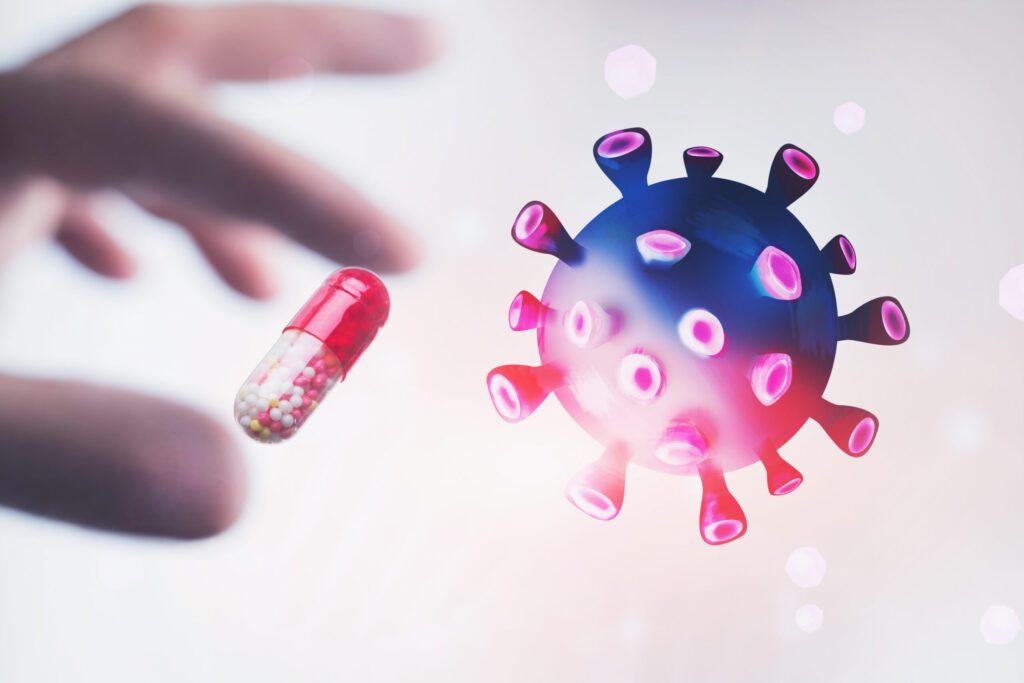
Article by Lalita Panicker Consulting Editor, Views and Editor, Insight, Hindustan Times, New Delhi
The US Department of Health and Human Services (HHS) has announced its first list of 10 prescription drugs whose prices will be open for negotiation in 2023 and 2024. Any settled price will become effective in 2026. The HHS will be working through the Centres for Medicare and Medicaid Services (CMS) under the provisions of US President Joe Biden’s Inflation Reduction Act, the historic law lowering health care costs.
Medicare enrollees taking the 10 drugs covered under Part D selected for negotiation paid a total of $3.4 billion in out-of-pocket costs in 2022 for these drugs. https://www.hhs.gov/about/news/2023/08/29/hhs-selects-the-first-drugs-for-medicare-drug-price-negotiation.html
The Biden-Harris Administration has made lowering prescription drug costs and improving access to innovative therapies a key priority. Alongside other provisions in the new law that increase the affordability of health care and prescription drugs, allowing Medicare to negotiate prescription drug prices will strengthen the program’s ability to serve people with Medicare. The negotiation
process will consider the selected drug’s clinical benefit, the extent to which it fulfills an unmet medical need, and its impact on people who rely on Medicare, among other considerations, such as costs associated with research and development as well as production and distribution for selected drugs. As a result of negotiations, people with Medicare will have access to innovative, life-saving treatments at lower costs to Medicare.
The selected drug list for the first round of negotiation is:
· Eliquis
· Jardiance
· Xarelto
· Januvia
· Farxiga
· Entresto
· Enbrel
· Imbruvica
· Stelara
· Fiasp; Fiasp FlexTouch; Fiasp PenFill; NovoLog; NovoLog FlexPen; NovoLog PenFill
These selected drugs accounted for $50.5 billion in total Part D gross covered prescription drug costs, or about 20%, of total Part D gross covered prescription drug costs between June 1, 2022 and May 31, 2023. CMS will publish any agreed-upon negotiated prices for the selected drugs by September 1, 2024; those prices will come into effect starting January 1, 2026. In future years, CMS will select for negotiation up to 15 more drugs covered under Part D for 2027, up to 15 more drugs for 2028 (including drugs covered under Part B and Part D), and up to 20 more drugs for each year after that, as outlined in the Inflation Reduction Act.
////
When the diabetes treatments known as GLP-1 analogs reached the market in 2005, doctors advised patients taking the drugs that they might lose a small amount of weight. Talk about an understatement. Obese people can drop more than 15% of their body weight, studies have found, and two of the medications are now approved by the U.S. Food and Drug Administration (FDA) for weight reduction. A surge in demand for the drugs as slimming treatments has led to shortages.
But patient reports and animal studies have yielded tantalizing signs that the drugs may spur another unexpected and welcome effect: fighting addiction. Most early trials were disappointing, but they used less potent versions of the drugs. Now, at least nine phase 2 clinical trials are underway or being planned to test whether the more powerful compound semaglutide and its chemical cousins can help patients curb their use of cigarettes, alcohol, opioids, or cocaine. Hopes are high. Semaglutide (sold under the trade names Wegovy, Ozempic, and Rybelsus) “is truly the most exciting drug for the last few decades,” says neuropharmacologist Leandro Vendruscolo of the U.S. National Institute on Drug Abuse. https://www.science.org/content/article/hot-weight-loss-drugs-tested-addiction-treatments?
If the results of the new trials are positive, addiction science could have its own “Prozac moment,” says clinical neuroscientist W. Kyle Simmons of the Oklahoma State University Centre for Health Sciences. In the 1980s, that drug brought a sea change to psychiatry, becoming part of popular culture and leading to the wider use of antidepressants.
Scientists have long been searching for new addiction drugs. Although FDA has approved several, including three for patients with alcohol use disorder, these medicines only work for a small percentage of people who try them. And the pharmaceutical industry has not delivered new compounds, in part because companies believe patients won’t stick with treatments, making their development a poor investment, says clinical neuroscientist Lara Ray of the University of California, Los Angeles. The last “new” drug treatment for alcohol use disorder received FDA approval in 2006—and it was an injectable version of a drug, naltrexone, that had been available since the 1980s.
So when patients taking GLP-1 analogs for diabetes or weight loss reported that their hankering for substances such as alcohol and nicotine declined, researchers and doctors in the addiction field perked up. “You usually don’t hear people say that a drug makes them less interested in drinking,” says clinical psychologist Joseph Schacht of the University of Colorado School of Medicine.
Researchers are still probing how GLP-1 analogs might pull off that feat. The drugs replicate the effects of the hormone glucagon-like peptide-1; by prodding its receptors in the pancreas, they stimulate release of insulin and trigger other beneficial responses, which explains how they help people with diabetes. But several structures in the brain also produce GLP-1 or carry receptors for the hormone—including brain areas that are involved in our reward pathways, which drive us to pursue pleasurable activities, such as eating tasty food or hanging out with friends. Addiction involves “hijacking of the reward pathways in the brain,” says behavioural neuroscientist Patricia Grigson of the Pennsylvania State University College of Medicine. Researchers think GLP-1 analogs spur weight loss in part by quelling activity of this system, and the same mechanism could explain why people who take the medications report they are less motivated to drink and smoke.
Studies in rodents and primates have supported that mechanism and confirmed the drugs diminish the desire for substances such as alcohol, fentanyl, nicotine, and heroin.
If GLP-1 analogs prove effective in the current phase 2 trials, access to the medications, which can cost more than $12,000 per year, could become a concern. Because of high costs and other barriers, patients
with substance use disorders often can’t access current addiction treatments, says psychologist Katie Witkiewitz of the University of New Mexico. “I don’t want [semaglutide] to be a medication that is only available to people who are wealthy.”
Clinical psychiatrist Anders Fink-Jensen of the University of Copenhagen and colleagues even demonstrated that the drugs work in an incorrigible group of drinkers, the monkeys living on the islands of St. Kitts and Nevis in the Caribbean. These rowdy primates are notorious for heavy consumption of alcoholic drinks, which they often swipe from tourists.
////
A coalition of institutions from dengue-endemic countries aims to deliver a new treatment for dengue from repurposed drugs and combinations within 5 years, according to a comment published in The Lancet Global Health journal.
(https://www.thelancet.com/journals/langlo/article/PIIS2214-109X(23)00362-5/fulltext)
The mission of the alliance, The Dengue Alliance, is to accelerate research and development and deliver dengue therapeutics through an inclusive partnership, it said.
“An integrated approach that comprises vector control, use of safe and effective vaccines, and an effective treatment is needed to face the growing challenges of dengue infection,” the alliance formed by the Drugs for Neglected Diseases initiative (DNDi), Switzerland, said in its comment.
Dengue is currently the most rapidly spreading mosquito-borne viral infection in the world, with half of the world’s population at risk of becoming infected.
As a result of the climate crisis, rapid urbanisation, and widespread international travel, the incidence of dengue is rapidly increasing, overwhelming health-care systems in many lower-income countries. The climate crisis has increased the burden of dengue in endemic countries and has also led to expansion of this infection to new territories in Europe and North America.
Dengue is estimated to infect approximately 390 million individuals annually, with 96 million infections being symptomatic.
So far, the only strategy adopted to reduce the burden of dengue is vector control. Although techniques such as using Wolbachia bacteria to reduce dengue transmission by Aedes mosquitoes look promising, it is evident that vector control alone is unlikely to be adequate to reduce the burden of dengue. The currently available dengue vaccines (CYD-TDV and TAK-003) have been shown to reduce hospitalizations, especially in dengue-seropositive individuals, but lack efficacy against some dengue virus serotypes.
Furthermore, CYD-TDV showed a higher incidence of severe dengue in dengue-naive vaccine recipients, and both vaccines show some degree of waning immunity with time, especially in seronegative individuals.
Therefore, an integrated approach that comprises vector control, use of safe and effective vaccines, and an effective treatment is needed to face the growing challenges of dengue infection.
Efforts focused on finding a treatment have been scarce, with some investigator-led clinical trials conducted, and a few performed by pharmaceutical companies.
The importance of developing a treatment for dengue has largely been ignored. The Drugs for Neglected Diseases initiative, which is focused on finding novel affordable treatment solutions for neglected tropical diseases since its inception in 2003, has recently formed a Global Dengue Alliance with several institutions in dengue-endemic countries, including the Faculty of Medicine at Siriraj Hospital, Mahidol University in Thailand; the Ministry of Health in Malaysia; the Translational Health Science and Technology Institute in India; the Oswaldo Cruz Foundation in Brazil; and the Federal University of Minas Gerais in Brazil. The mission of this alliance is to accelerate research and development and deliver dengue therapeutics through an inclusive partnership. It aims to deliver a new treatment for dengue, within 5 years, from repurposed drugs and combinations (including novel antivirals from pharmaceutical companies). This alliance is co-created, co-owned, and co-funded by dengue-endemic countries, with a tiered governance mechanism allowing collaborative decision making at different levels. The organisations have formed a preclinical working group, a clinical working group, and a translational working group.
All three working groups feed into the Joint Steering Committee, which is responsible for delivering on the vision and mission of the alliance. The partners of this alliance share knowledge, experience, technologies, and capabilities to jointly validate preclinical assays with the ambition in the initial phase to identify currently available drugs that can be repurposed for use as dengue therapeutics. In parallel, clinical trials for these drug candidates are being designed using the expertise of clinicians in these countries who have been treating patients with dengue for many years, with initiation planned by the end of 2023.






